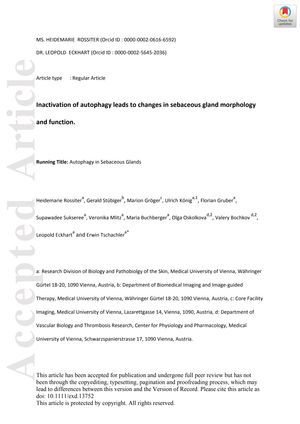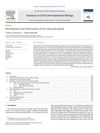Inactivation of Autophagy Leads to Changes in Sebaceous Gland Morphology and Function
August 2018
in “
Experimental dermatology
”

TLDR Autophagy is crucial for normal sebaceous gland function and sebum composition.
The study investigated the effects of autophagy inactivation on sebaceous gland morphology and function by deleting the Atg7 gene in keratinocytes of mice. Male mice with the Atg7 gene inactivated developed an oily coat, had sebaceous glands twice as large as controls, increased sebocyte proliferation, and produced twice as much lipid per unit of hair. The lipid composition of their sebum showed a 40% reduction in free fatty acids and cholesterol, and a 5-fold increase in fatty acid methyl esters. The study concluded that autophagy played a significant role in regulating sebaceous gland function and sebum composition, highlighting its importance in maintaining normal gland function and lipid homeostasis.
View this study on onlinelibrary.wiley.com →
Cited in this study
3 / results
research Mechanistic Target of Rapamycin (mTOR) Expression Is Increased in Acne Patients' Skin
Acne patients have higher levels of mTOR in their skin, which could be linked to future metabolic disease.
research Activation of Nrf2 in keratinocytes causes chloracne (MADISH)‐like skin disease in mice
Activating Nrf2 in skin cells causes skin disease similar to chloracne in mice.

research Development and homeostasis of the sebaceous gland
The document concludes that understanding the sebaceous gland's development and function is key to addressing related skin diseases and aging effects.